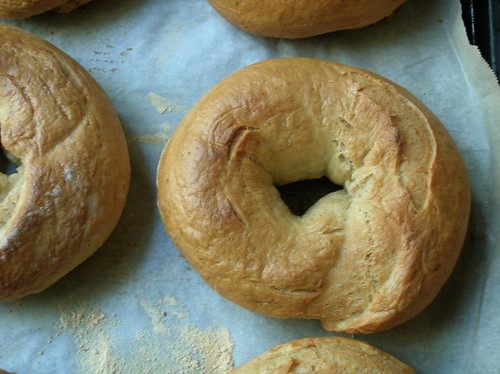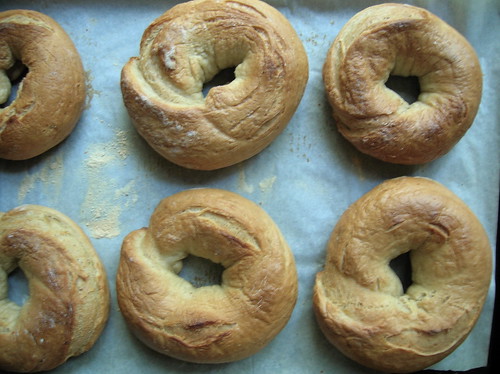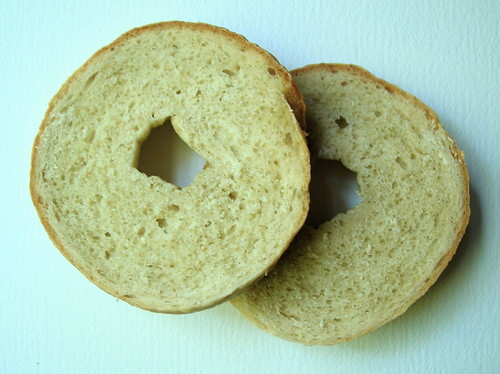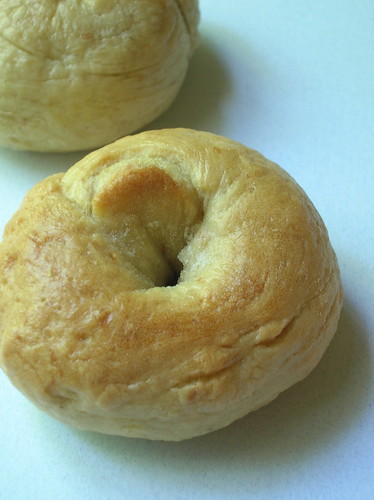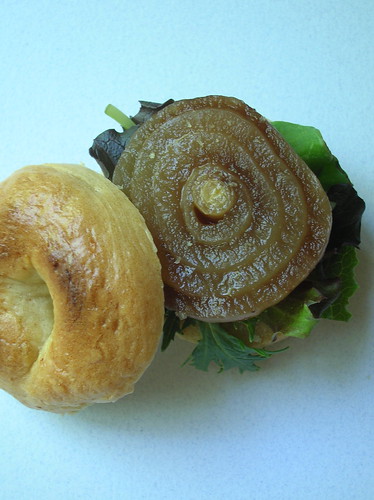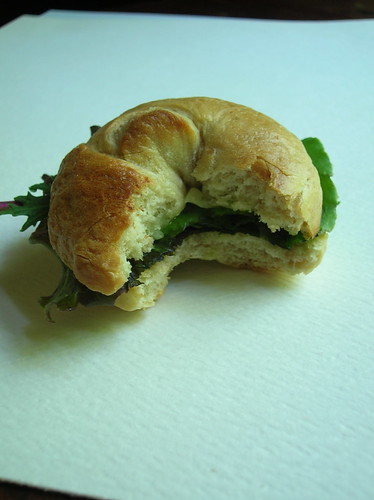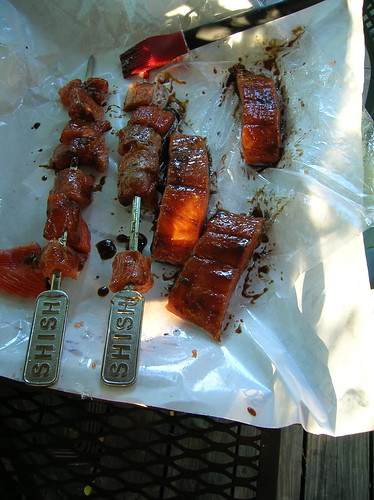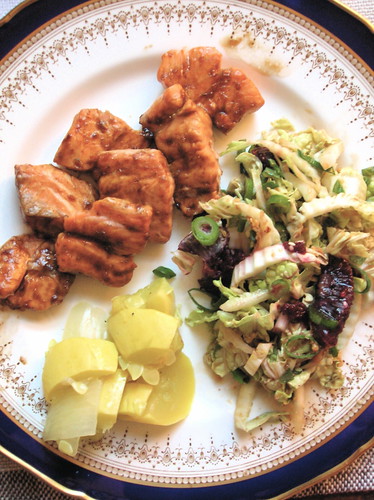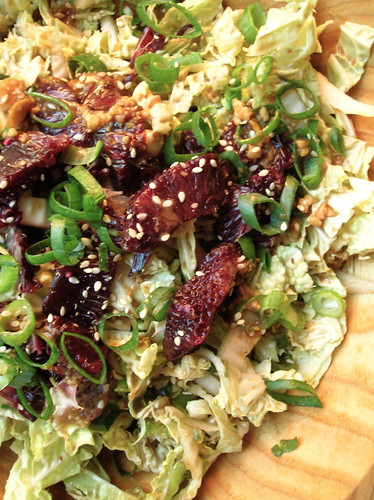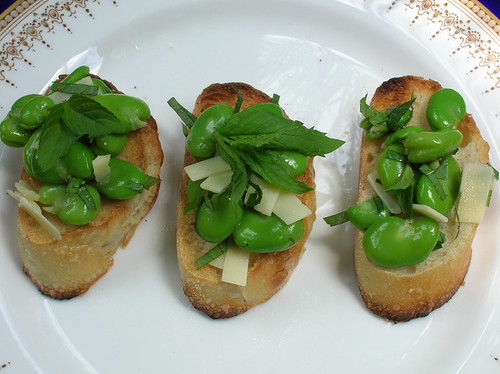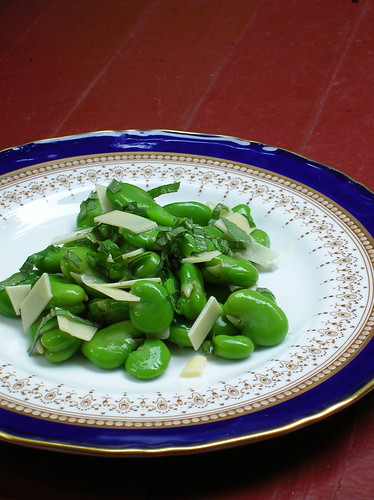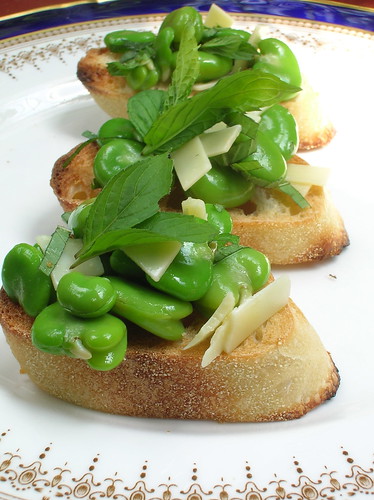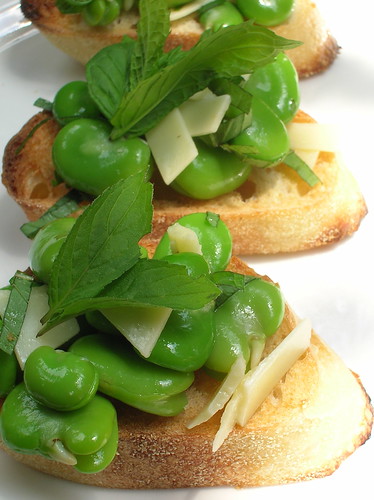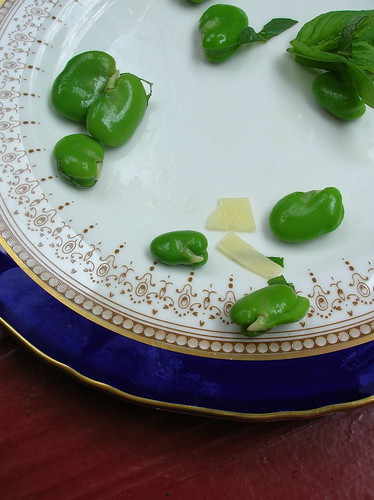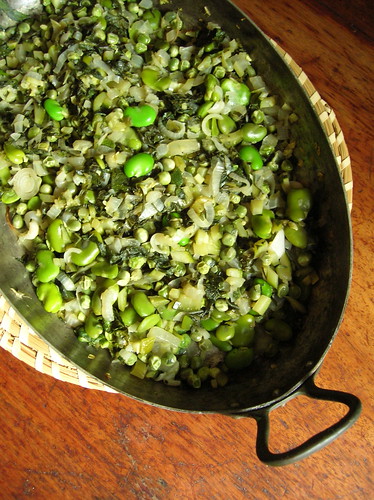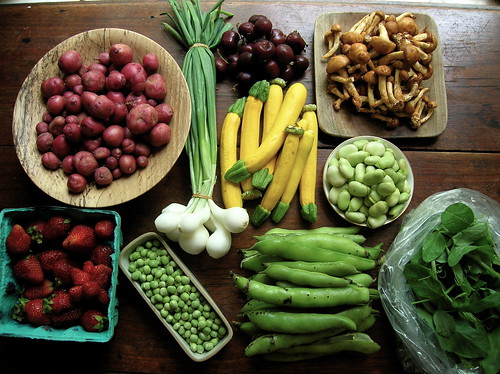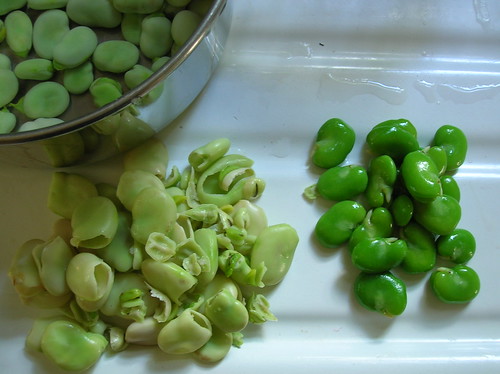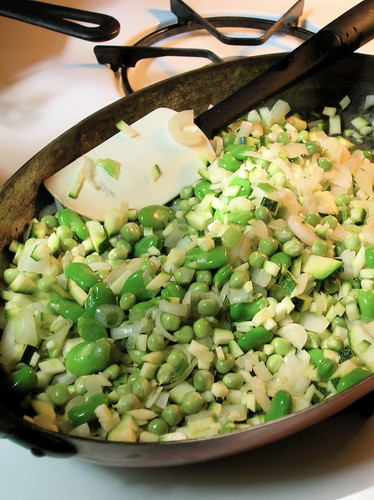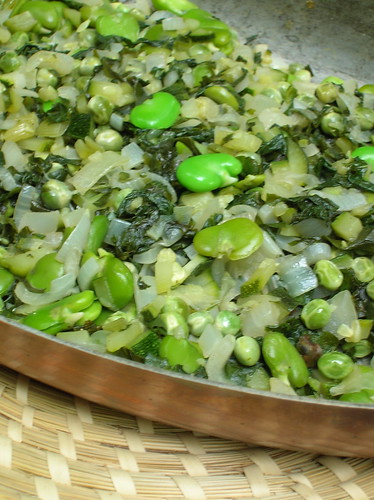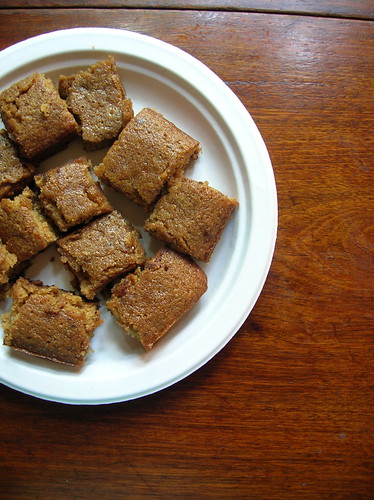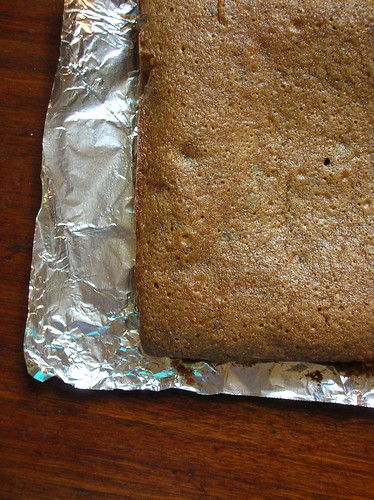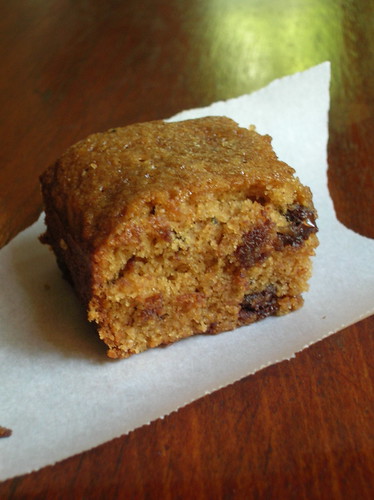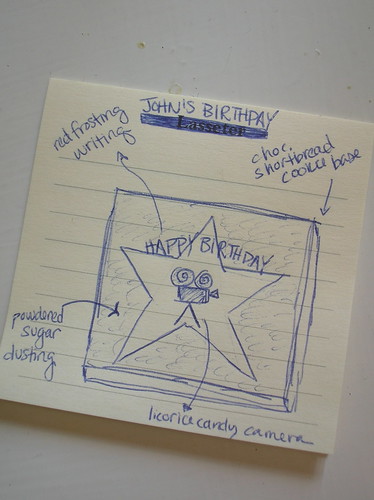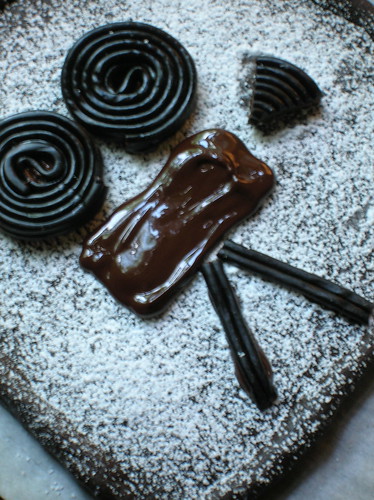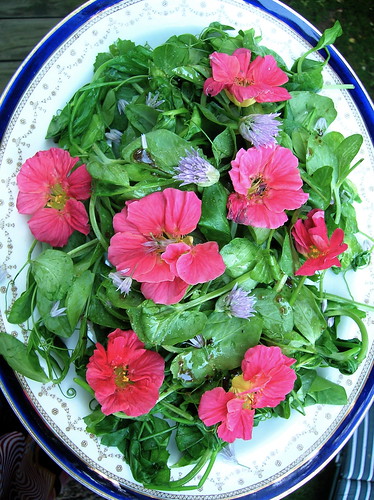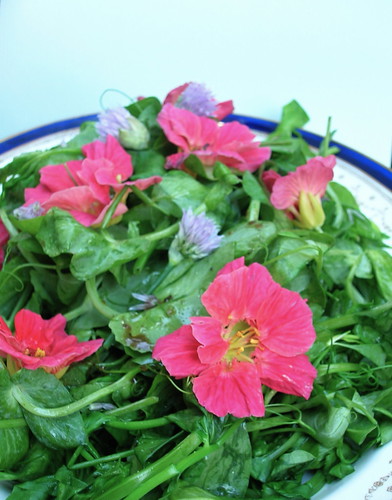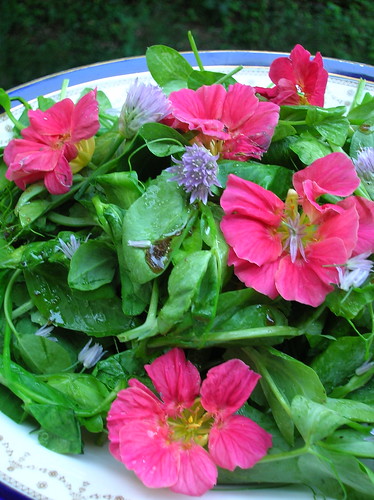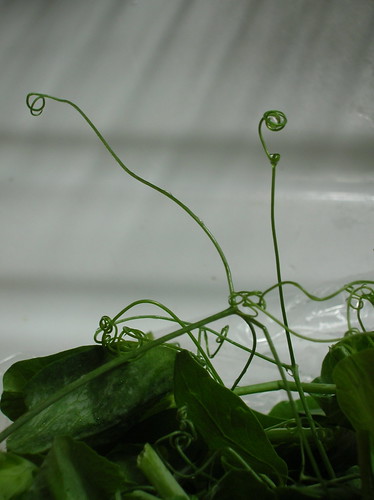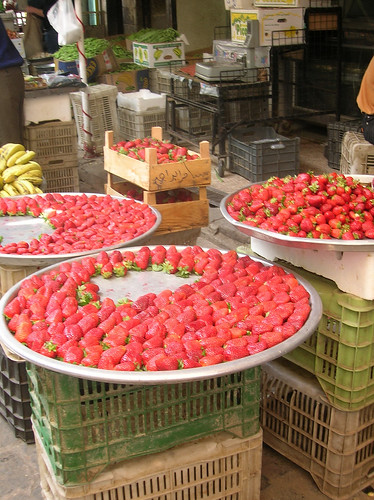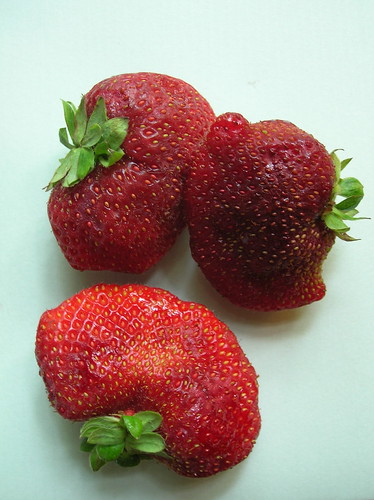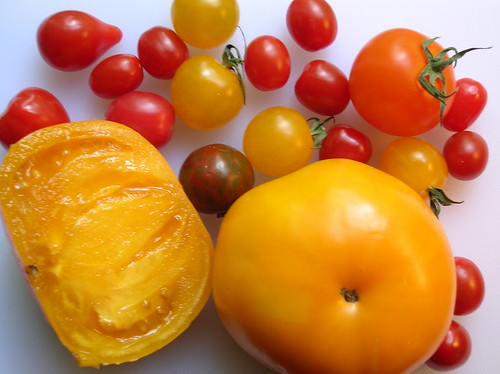
The other night as I was cleaning up from dinner, I looked out the window and noticed the sky was still pale gray beyond the shadows of the trees. Indeed, it was still light out at well past nine, one of the best signs of summer if I know one. How can I not have noticed the arrival of summer nights, the possibility of late evening walks after dinner, the smell of honeysuckle in the slightly damp air? One of the things I loved about my time in Paris were the evenings when it stayed light until ten or eleven, popping into shops after dinner or stopping for an ice cream.
And while our local markets are going at full speed, that other harbinger of summer, the tomato, is only on the cusp of arriving. My own tomato plants are taller than I am and overburdened with fat orbs still verdant green; I am just itching in anticipation! But for now, the best tomatoes I've been finding around here are these fat yellow ones; thin skinned and ripe, they exude a wonderful tomato smell as soon as you slice them.

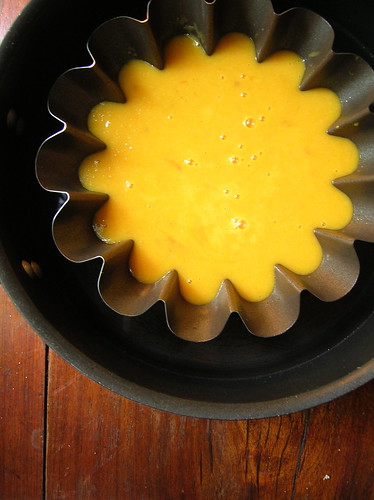
The idea for this yellow tomato flan came from a tart in Michel Richard's "Happy in the Kitchen," I was enamored by the bright yellow filling paired with little heirloom cherry tomatoes, but I didn't want to bother with the fuss of a tart shell. Instead I turned the yellow tomatoes into a sort of savory custard, topped with a bright salad, it's a perfect first course or side dish at dinner. This should really be baked in individual ramekins or a shallow baking dish; I baked mine in a brioche pan because I liked the shape, but it took forever for the flan to set. What I love about this is that, unadulterated by milk or cream, it tastes purely of tomato. Make sure to chill this completely before serving, it tastes best cold, and the texture will firm up in the fridge.
In keeping with the ease of summer, the prep for this does not take long at all, so you’ll be in and out of the kitchen quickly. If you do want to dress this up, I imagine a bright breen basil or pesto sauce would be the perfect accompaniement. And if you can, serve it al fresco, under the still-light sky of a summer evening.
Speaking of summer, that means vacation, and we are off for nearly (gasp, joy!) two glorious weeks of relaxation! A long trip and an hour-and-a-half boat ride to one of my favorite isolated islands on earth. I've got some posts written up to keep you all entertained in my absence, but seeing as how internet access is questionable, please excuse me if updates are less-than-regular.
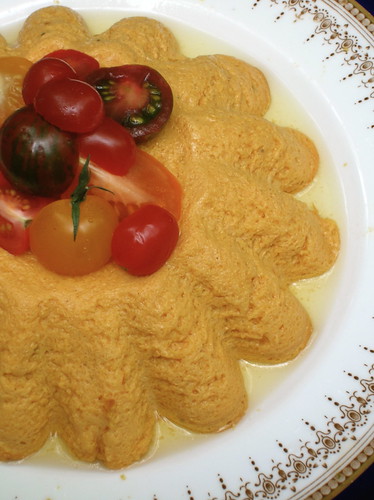
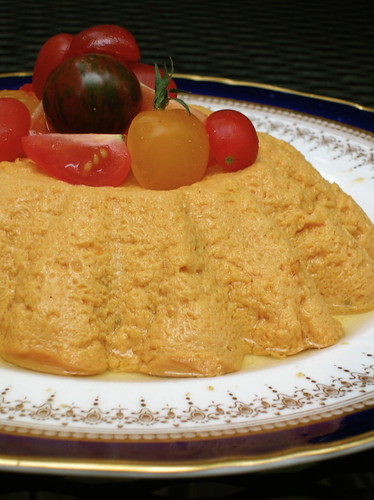
Yellow Tomato Flan
This tastes purely of tomatoes, so make sure to use a mild cheese that won’t overpower the dish (we used Kashkeval). Also, it should be served lightly chilled so that the texture remains firm. This is a lovely side dish at dinner or an elegant first course over salad greens, you could dress it up with a drizzle of basil or pesto sauce if desired.
2 lb yellow tomatoes (about 3 large), diced
4 eggs
1/2 cup finely grated mild white cheese
pinch of sea salt
for serving: halved cherry tomatoes
1. Preheat the oven to 375 F. Grease 6 ramekins or a 9-inch round pan or a large brioche pan, choose a roasting pan that will hold the ramekins or round pan.
2. Heat a tablespoon of olive oil in a skillet. Add the tomatoes and saute over medium heat until the tomatoes are softened and no longer watery, about 5-10 minutes. Transfer the tomatoes to a blender and puree until smooth. Strain the mixture through a mesh sieve into a bowl, discarding and skins or seeds that remain.
3. Add the eggs to the tomato puree, beating until smooth and well combined. Fold in the cheese and season with sea salt. Pour the tomato mixture into the pan or ramekins, bang the pan once on the counter top to remove any air bubbles. Fill the roasting pan with very hot water so that the water reaches at least half-way up the sides of the ramekins/pan (a water bath).
4. Carefully slide the pan into the oven and bake for 40-50 minutes for the ramekins, or 70 minutes for the brioche pan. Top up the water level in the roasting pan as necessary. When done, the top and edges of the flan should be well-set. Remove from the oven, cool, and refrigerate the flans to chill completely. Serve cool, with halved cherry tomatoes on top.

